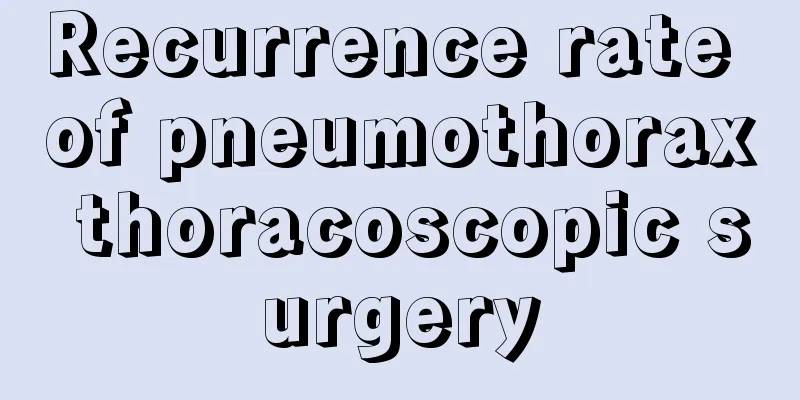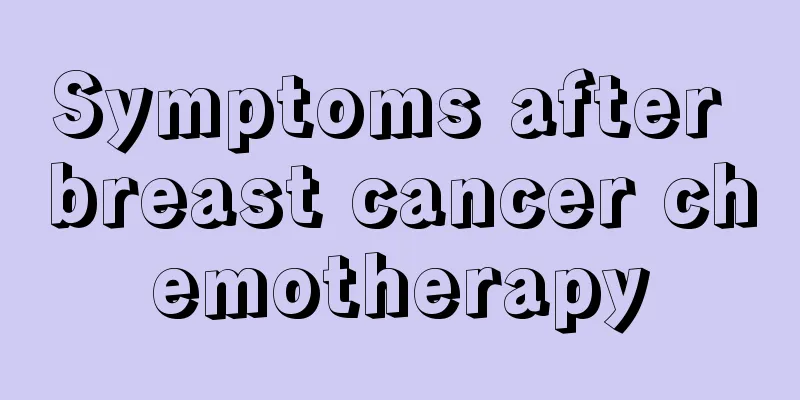What is the reason for shaking hands when holding things

|
In life, we often see some people who have fallen ill and when we see them again, their hands will tremble when they hold things, or their limbs will become uncontrollable. Most people in this condition suffer from cerebral hemorrhage or some very important diseases. Their brain nerves were damaged, and it took some time for the body to recover, so their limbs could not be fully controlled at that time. Essential tremor (ET) is the most common movement disorder, mainly postural and movement tremors in the hands, head and other parts of the body. Essential tremor has a contradictory clinical nature. On the one hand, it is a mild, monosymptomatic disease, but on the other hand, it is a common, progressive disease with significant clinical variability. The tremor of this disease worsens when one is concentrating, mentally stressed, tired, or hungry. In most cases, it disappears temporarily after drinking and worsens the next day. This is also the clinical feature of essential tremor. The cause of essential tremor is unclear and it is easy to be confused with tremors caused by other diseases. Disease classification Essential tremor is also called familial tremor, and about 60% of patients have a family history. No cross-generational phenomenon has been found in multiple families with essential tremor, and the gender distribution is balanced. It is generally believed that this is an autosomal dominant inheritance, which is fully penetrant before the age of 65 to 70 years. Incomplete penetrance and sporadic cases have also been reported. The clinical features of sporadic and hereditary cases are exactly the same, and it is usually considered to be the same disease, but the related gene abnormalities have not yet been identified. The bimodal characteristics of the age of onset of essential tremor suggest the possibility of two different abnormal genes. The age of onset of familial tremor is earlier than that of sporadic cases, suggesting that early-onset essential tremor is more strongly affected by genetic susceptibility, which can significantly affect the clinical subtype characteristics. Pathogenesis and Pathophysiology The exact cause of this disease is still unclear. Its generation may be the result of the combined action of peripheral muscle spindle afferents and central autonomic oscillators. The ventro-intermediate nucleus (VIM) of the thalamus is the nucleus that receives proprioceptive afferents. The rhythmic burst discharge activity of its neurons may play a key role, which has been confirmed by both neurophysiological recordings and stereotactic surgery. PET studies using CO2 labeled with oxygen (15[O]) revealed selective hypermetabolic function in the bilateral cerebellum and inferior olive. Functional magnetic resonance imaging (FMRI) showed increased activity in the contralateral cortical motor and sensory areas, globus pallidus, and thalamus, as well as hyperactivity in the bilateral dentate nuclei, cerebellar hemispheres, and red nucleus. These suggest that tremor is the result of oscillations in the cerebellar-olivary nucleus loop in the pathway from the thalamus and motor cortex to the spinal cord. Because there are no specific changes in the pathological anatomy, the location of the abnormally vibrating central nervous system "pacemaker" is unclear, so it is speculated that the central oscillator is enhanced or inhibited by peripheral reflexes to regulate the generation and amplitude of tremor. Clinical manifestations High incidence group 1. Family history: Essential tremor is also called familial tremor. About 60% of patients have a family history, showing autosomal dominant inheritance characteristics. Researchers reported different rates of family history, ranging from 17.4% to 100%. The reason for such a huge difference is that the diagnostic criteria for essential tremor are different. The correct evaluation of the family history of essential tremor depends on inquiry about tremor symptoms and clinical examination. 2. Incidence Typical essential tremor can be found in children, adolescents, and middle-aged and elderly people. The incidence in the general population is 0.3%~1.7%, and increases with age. The incidence rate increases to 5.5% in people over 40 years old, and is 10.2% in people over 65 years old. There is no significant difference in incidence between men and women. It has also been reported that the incidence ratio of women to men in Sweden and Finland is 0.5:0.71. Essential tremor may be more common in left-handed people. 3. Age of onset Essential tremor can occur at any age. There are two views on the peak age of onset. One view is that the distribution of onset age has a bimodal characteristic, that is, in the two age groups of 20-30 years old and 50-60 years old. The other view is that essential tremor rarely occurs in teenagers, and the number of cases increases with age. The average age of onset is 37-47 years old. 4. Course of disease The age of onset of tremor has nothing to do with the progression of the disease. Most scholars believe that the disease always progresses slowly and never remits. Loss of productivity due to tremor begins 10 to 20 years after onset and increases in incidence with disease duration and age. Symptoms The only symptom of essential tremor is tremor, occasionally accompanied by reports of voice tone and slight gait abnormalities. Patients usually start with the upper limbs, mainly affecting the upper limbs, but can also affect the head, legs, trunk, voice and facial muscles. It manifests as postural tremor and may contain kinetic, intention, or resting tremor components. The tremor may be worse during directed movements. The frequency of tremor is 4~8Hz. The frequency at onset is 8~12Hz. With the course of the disease and age, the frequency gradually decreases and the amplitude gradually increases. Patients often feel vibrations in their body for the first few months, followed by brief tremors during activities when excited or tired, and then permanent tremors. Able to control oneself for a short period of time, and the impact on activities is not obvious. At this stage, postural tremor is reflexive, comes on quickly, and lasts only a few seconds. As the amplitude of the tremor increases, it is often difficult to control and may even affect work. Even severe tremors often fluctuate and sometimes disappear temporarily when the posture is maintained. The amplitude and frequency of tremors often change when performing different movements or maintaining different postures. Tremors can still be suppressed by oneself at this time, but it will be more difficult and for a shorter period of time. It is generally believed that essential tremor starts symmetrically in the bilateral upper limbs, but it can also start unilaterally. Once the upper limbs are affected, the disease often spreads upward to the head. noodle. Tongue and mandible. Involvement of the trunk and bilateral lower limbs is rare and only occurs in the late stage of the disease, and the degree is milder than that of the upper limbs. Typical symptoms are rhythmic abduction-adduction tremor and flexion-extension tremor of the hands. Pronation-supination tremor (similar to Parkinson's disease) is very rare. The written words may be deformed, but they will not appear to be too small. Another commonly affected area is the craniocervical muscle group. The head, tongue or vocal muscles can be accumulated, which manifests as severe postural tremor in the patient's hands and head tremor, including vertical "nodding" movements and horizontal "shaking head" movements. Tremors of the soft palate and tongue can cause difficulty in speaking. Tremor begins to affect activities 10 to 20 years after onset, increases in severity with age, and impairs the ability to complete stimuli, reaching a peak in the sixth decade after onset. 86% of patients are between 60 and 70 years old, and growth can affect social activities and living abilities, including writing, drinking, eating, dressing, speech and operation. The greater the increase, the greater the impact on activity capacity. There was no difference in the effects of tremor between the sexes. Many factors can influence tremors. Hunger, fatigue, emotional excitement and temperature (high fever, hot bath) can aggravate tremors. Like most involuntary movements, essential tremor improves during sleep, but there are also individual reports of tremor persisting during deep sleep. The response of essential tremor to ethanol (alcohol) is characteristic. In many patients, tremors are reduced by ingesting even small amounts of ethanol. In 42% to 75% of patients, tremors are relieved after drinking, but this is only temporary, generally lasting for 2 to 4 hours. The tremors will worsen on the next day. There are few reports that ethanol has similar effects on other types of tremor, and ethanol acts through the central nervous system. It has been reported that essential tremor may be associated with other movement disorders. The incidence of Parkinson's disease in patients with essential tremor is much higher than that in normal controls. Even in patients with essential tremor over 60 years old, the risk of Parkinson's disease is 24 times that of a random population of the same age group. Postural tremor is common in many movement disorders, including Parkinson's disease, and may even be the only symptom in the early stages. The lack of strict diagnostic criteria may lead to misdiagnosis of essential tremor. 6.6%~47% of patients with essential tremor have dystonia. Postural tremor is also common in dystonia, especially writer's cramp, and essential tremor is present in 7% to 23% of dystonias. Spasmodic torticollis is often accompanied by tremors of the head and trunk. Essential tremor may present with atypical tremor manifestations, including hand movement disorders, complex resting and postural tremors, primary writing tremor, localized vocal tremor, mandibular tremor, localized tongue tremor and orthostatic tremor. A tremor that is localized to one part of the body throughout the course of the illness is not considered essential tremor. Task-specific tremors such as tongue tremor, mandibular tremor, vocal tremor, essential orthostatic tremor, and occupational tremor can only be considered as variants of essential tremor when typical characteristic tremors appear during the course of the disease. |
<<: The efficacy and function of salty mint
>>: The efficacy and side effects of tiger oil
Recommend
What causes mandibular bone cancer
The formation of mandibular bone cancer is relate...
The harm of squatting for a long time to defecate
With the popularity of mobile phones and the deve...
Banana peels can lower blood sugar. Here is an effective way to lower blood pressure.
Many foods around us have high sugar content, esp...
How to treat honeycomb-like holes on the soles of feet
In summer, many people are troubled by their feet...
What to do if you regret getting married
In our lives, there are many couples who get marr...
What are the cures for skin cancer
What are the treatments for skin cancer? Skin can...
Symptoms of hepatic flexure syndrome
The intestinal system is a very important part of...
Symptoms of detoxification after taking a medicinal bath
With the improvement of living standards, people ...
Will low sperm activity affect fertility?
Generally speaking, men who have been engaged in ...
How long does it take to change the dressing after hemorrhoid surgery
Hemorrhoids are a very common intestinal disease ...
Does cold light teeth whitening hurt?
Cold light teeth whitening is a method of teeth w...
What are the symptoms of cystitis?
Cystitis is a relatively common urinary system di...
What are the symptoms of uterine cancer
In life, many patients with uterine cancer feel d...
Causes of shoulder and neck pain caused by thyroid cancer
Thyroid cancer can cause shoulder and neck pain, ...
How to use laundry disinfectant
At present, there are still many types of laundry...









